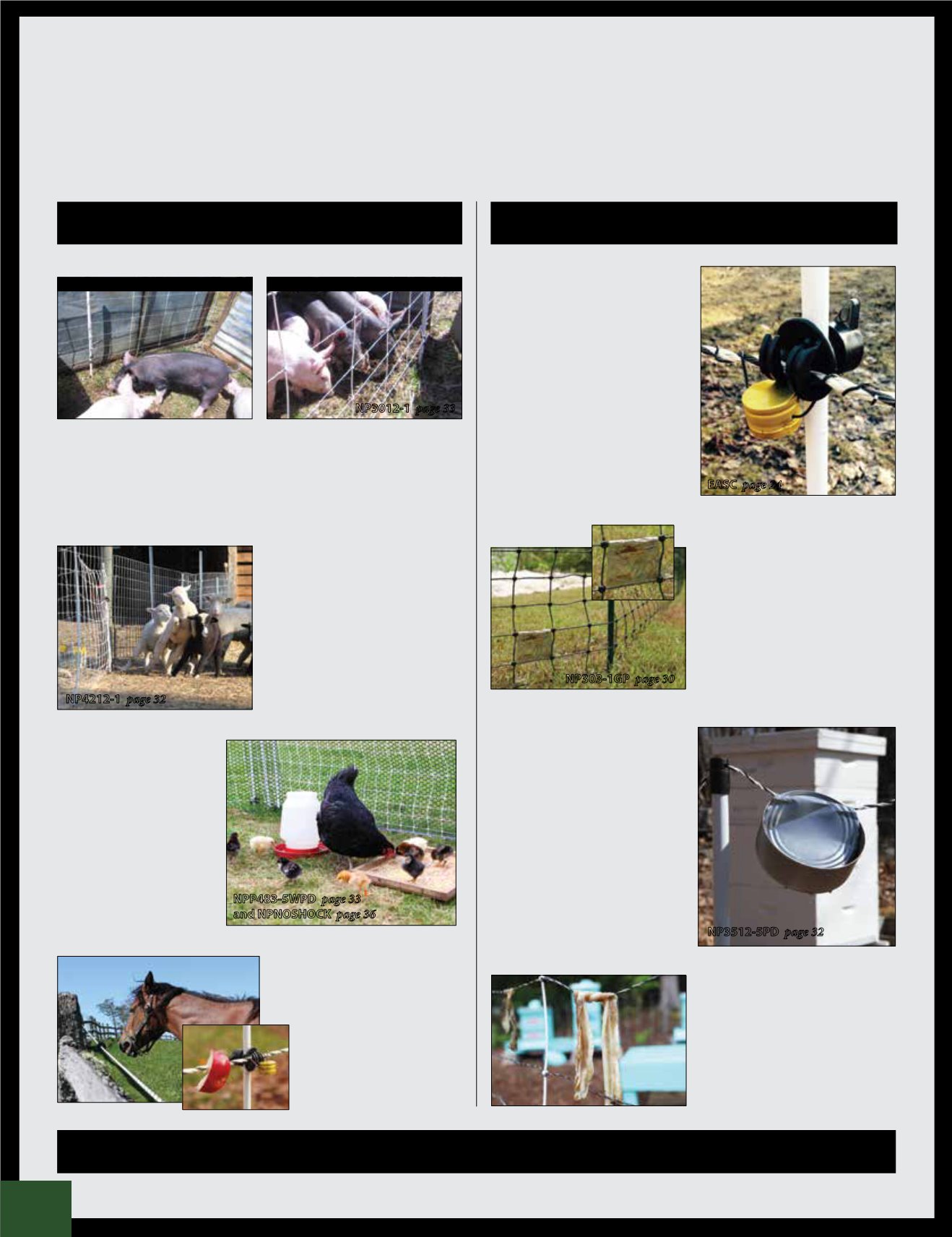
Training Is Important!
An important factor of any agricultural electric fence is educating livestock and wildlife about them. Electric fences are psychological
barriers and in order for them to work effectively, your animals and wildlife must each learn to respect them. Below are a few
examples of ways to train various species of livestock and wildlife. For further recommendations on this topic, give us a call!
Training Livestock
Horses
Wellscroft recommends training
horses to electric fences inside a
physical fence with a conductor
offset. Here on its own terms, a
horse reacts after investigating
a wedge of apple that was
placed on the fence earlier in
the day. Scent caps also work
well for training horses.
Meat such as the bacon pictured
here is attractive bait for predators
such as coyotes and domestic dogs.
This is an effective method for
teaching predators to respect the
fence.
Poultry
Right: Week-old chicks learn
about the electric PoultryNet
which lines one side of their 50 ft.
enclosure; the remainder secures
the perimeter from predators.
This net is complemented by
NoShock Chick Fence to prevent
chicks from escaping while they
learn about the electric net. Train
wildlife such as foxes, raccoons,
and weasels using the tuna can
method explained at right.
NPP483-5WPD
page 33
and NPNOSHOCK
page 36
Pigs
Above: Because pigs have a natural tendency to run forward when shocked, it is
important to train them to electric fence with the addition of a physical barrier.
Here these young pigs are trained to electric Pig QuikFence by first enclosing them
in an area with solid walls on three sides and with the fourth wall visible, but
separated enough to run the electric net through the enclosure. Once the pigs have
learned to respect the electric fence they can be pastured and rotated easily.
NP3012-1
page 33
Visual/physical barrier in place
Barrier removed 1-2 days later
ExcludingWoodchucks,
Raccoons, Rabbits, etc.
Left: Vegetable garden fences can be
baited using peanut butter filled pockets
created from tin foil. Securely attach the
foil to the electric horizontal at a height
appropriate for the wildlife. Because the
foil is conductive, the entire pocket will
become charged and distribute a shock as
long as the wildlife is well grounded when
it makes contact with the foil.
NP303-1GP
page 30
Deterring Deer
Right: Wellscroft highly recommends
baiting electric anti-deer fences. Scent
caps are an easy and effective deterrent.
Wired onto the fence roughly 100' apart,
each cap contains a cotton ball filled
with a strong apple scent that invites
deer to investigate further. Ideal first
contact with the cap is made with either
the nose or mouth which conducts a
powerful head shock to the deer eliciting
fear of the fence.
Tip
: Wire the scent cap
open side down to prevent rain from
collecting and diluting the scent. Refresh
the cap with a drop of apple scent as
needed.
EASC
page 24
Sheep and Goats
Left: Sheep and goats can be trained to
electric fence by placing feed directly
along the electric fence line. Be sure that
the fence is on and has good voltage.
Any livestock or predators that step too
close will receive a shock and learn to
respect the boundary created by the
electric fence. At left, these young lambs
learn about electric netting for the first
time. For added security note that the
netting is set up in front of a physical
fence of woven wire.
NP4212-1
page 32
Protecting Beehives
from Bears and Skunks
Right: Beehives can be effectively
protected from bears and small
predators using properly baited and
electrified fencing. A tuna can opened
¾ of the way and wired to the fence at
a support post creates an irresistible
attraction to lure wildlife. Again, when
the electrified can is touched with the
nose or mouth it will distribute a strong
head shock causing the bear or skunk to
fear the fence. Replenish bait as needed
and poke holes in the bottom of the can
to allow water to drain.
NP3512-5PD
page 32
Training Wildlife
NUMBER
page XX
16
New Engl and ’s Agr i cul tura l Fence Exper t s
Note: When hanging bait directly on a fence, do so near a support post to prevent weighing down the conductor.


